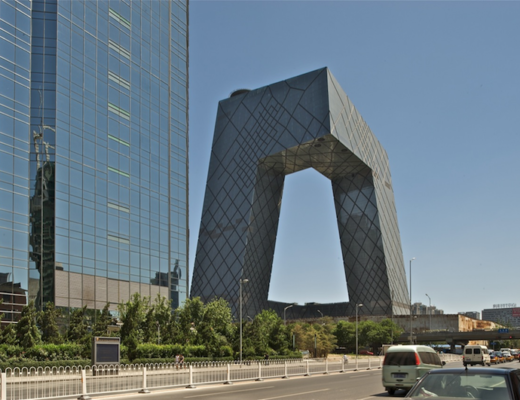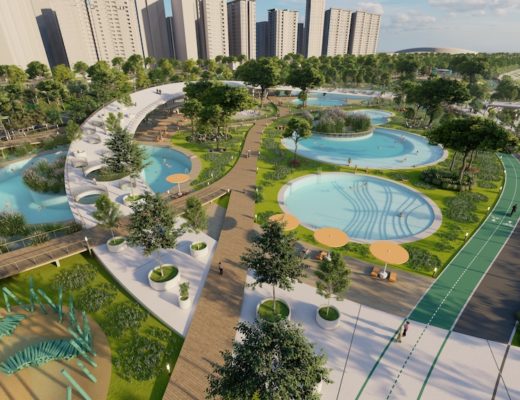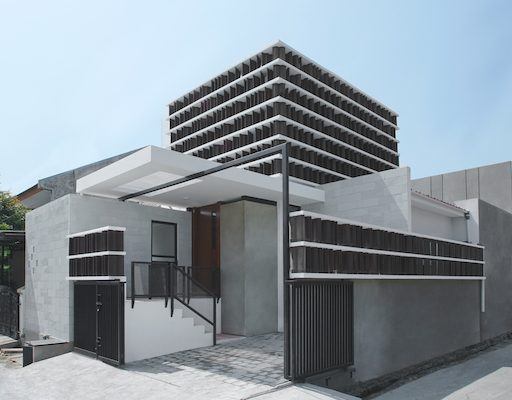To mark the World Refugee Day on June 20, architect David Cole, founder of Phnom Penh-based multidisciplinary collaborative practice Atelier Cole, as well as non-profit social and sustainable design charity Building Trust International, speaks to DE51GN about designing for displaced communities by involving them and making them the main stakeholders. (Top image: Kulen Outreach School)
You’ve worked on several projects that provide housing and other facilities such as education for the displaced communities. How have they changed the lives of these communities?
We’ve had the opportunity to work with communities from all over the world. As a design firm, we provide support and assistance in the delivery of design and construction for a range of uses such as schools, housing, and healthcare facilities. These buildings are needed to provide access to the basic human rights of shelter, education, and care. The process of delivering the projects can bring communities and stakeholders together with shared goals and needs which extend beyond the bricks and mortar of any one project.
What inspired you to establish Build Trust International?
I founded Building Trust international nearly 10 years ago and remain committed to encouraging others in the built environment sector to get involved with projects on a pro-bono basis. The best way to do this is by taking an active role and showing the benefits that can be found in engaging with worthwhile projects. Aside from the obvious philanthropic benefits, we’ve found that it has made our office better at engaging early on with all our clients’ needs through a more collaborative approach that we take to all projects. Our team has a balance of working on pro-bono and commercial projects and enjoy the balance that this provides. Indeed, we have found that many younger graduates want to be actively involved in projects that have wider-reaching benefits both socially and environmentally.
“We saw the need for Myanmarese communities living in Thailand to have long-term access to schooling needs but they had the inability to purchase land in Thailand. Therefore, we needed a solution that would provide a temporary building that could be dismantled and moved to either a new location or back over the border to Myanmar should the opportunity arise.” – David Cole, founder Atelier Cole and Building Trust International
What are some of the biggest considerations while designing shelter and social spaces for displaced people?
Early engagement with what the real issues are, consultation and listening to the needs and priorities of the group you are working with. Using workshops and design sessions to provide exposure to the group of new ideas and technologies that may not be locally known and unpicking what skills and technologies already exist within the community. The projects are rarely, if ever, a simple case of supplying a building, they are rather opportunities for sustainable models of community engagement and involvement. The building’s fabrication and delivery can be a tool for community strengthening, learning, and skill sharing. We look to see how a range of uses can be supported. Our role is more of a catalyst for projects rather than providers, in this way communities make decisions and drive projects ensuring that ownership belongs to them rather than any external funder or supporter.
What are the challenges involved not just in terms of spatial requirements but also socio-cultural factors?
There are many challenges that are unique to each project – remote location, fragmented groups, government and policy legislations, and corruption to name a few but each challenge gives rise to new solutions and opportunities.
What are the material considerations for such projects, considering there are budget constraints?
As with all projects, there are factors of time, cost and quality. A major factor in working with low-income groups is that the budget will be small. However, this provides a chance to explore opportunities that would not present themselves in a commercial project. We find that we can offset costs by using natural materials and engaging the community and benefactors in the construction. We can arrange volunteer workshops and discuss material donations from suppliers as part of their CSR commitments.
Are there any specific building codes that you have to adhere to while designing and constructing such spaces?
We ensure that any projects we take on aim to meet building codes in the countries that they are in. Where there are no or little codes, we use international standards. Most projects provide a chance to promote site safety. In Cambodia, we recently worked with Habitat for Humanity to write a construction curriculum focused on the main parts of construction and aimed at enabling SME contractors with a focus on house building. The main aim of the work was to create standards in construction that would provide sustainable safe long-lasting affordable homes.
The conversation is increasingly turning towards the need to create spaces that are not just another shelter but those that provide an avenue to segue into an integrated space capable of assimilating into the host community. Can this be done without disrupting the existing native communities?
I would need to know more about the specific case. While I agree that housing should not be seen as an answer to rural community development, there is a need to provide support to upgrading and providing longer-term investment in rural areas. In the past, this may have been seen as supporting house construction and there are cases where this has led to a loss of traditional building skills and in the inability to repair and replace imported materials. Rather than blanket policies for rural and remote areas, I would favour approaching it on a place-by-place basis. Careful consultation and listening to the needs and goals of communities and individuals is essential before looking at the physical assimilation of any project. We regularly consult community groups and other local groups before initiating any project to ensure that essential views and voices are being expressed and heard.
Can you cite any projects for displaced communities that are a good reference point?
When we think of displaced communities, we initially consider refugees and migrants, but it also relates to groups of rural community members moving to urban areas for work, (Cambodia Low-Cost Housing Project) and to school children that have to move out of rural communities in order to access secondary education (Kulen Outreach School).
While these shelters/spaces are temporary in their mandate, how do you ensure their longevity and/or adaptability in cases of extended stay and if these refugees are not able to return home or find other means of rehabilitation?
This is a great point and is one that we undertook to try and solve with Building Trust International back in 2012 with the moving school project. We saw the need for Myanmarese communities living in Thailand to have long-term access to schooling needs but they had the inability to purchase land in Thailand. Therefore, we needed a solution that would provide a temporary building that could be dismantled and moved to either a new location or back over the border to Myanmar should the opportunity arise. We went on to build a number of schools that employed this technique of modular prefab construction built by local Myanmarese steelwork apprentices and deployed in a number of locations to help well over 1,000 children gain access to a safe secure education.
You might also like:
World Refugee Day: Jan Rothuizen takes us inside Domiz refugee camp in Iraq
SHAU architects designs elevated community library in Indonesia’s central Java using local wood








